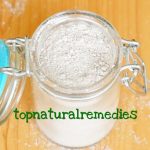Computer Vision Syndrome and a Few Natural Ways to Improve Your Eyesight
Working at a computer has become a routine for many people, not to mention the hours some of us spend gaming, browsing the internet, social networking or simply watching entertainment programs on a computer screen. All of this time spent in front of a computer screen (according to some statistics, even 3 hours can be too much, especially if you don’t take certain precautionary measures) will eventually lead to developing what is now called computer vision syndrome – eye strain and a series of other eyes, vision and muscular symptoms that can slow down your productivity and, if ignored, even cause permanent eye damage.

Contents
Computer vision syndrome – main causes
- Prolongued and uninterrupted focusing.
- Excessive brightness of the computer screen.
- Low contrast, especially when working with text.
- Reduced blinking, from an average of 12-24 blinks per minute, to as low as 6 blinks per minute.
Computer vision syndrome – symptoms
- Eye strain
- Headache, neck ache, back ache
- Blurred vision, double vision
- Dry eyes, irritated eyes
- Dizziness
- Light sensitivity
- Fatigue
Precautionary measures
- Adjust your seat and the position of the monitor so that the top of the screen is at eye level and the gaze angle at 10-20 degrees below the eye.
- If you have to work with printed documents while you are using the computer, make sure they are positioned at the same height and distance as the computer screen.
- Adjust the brightness and contrast of the screen until you feel as comfortable as possible.
- Wipe the screen every morning.
- Use an anti-glare filter or a computer monitor with an anti-glare screen.
- Wear a small plus-powered (+1.00 to +1.50) pair of eyeglasses with UV and blue light filtering lenses.
- Follow the 20-20-20 rule: every 20 minutes look away from the computer screen and for at least 20 seconds focus on an object situated at a distance of at least 20 feet.
- Drink plenty of water.
Natural ways to improve your eyesight
- Eat plenty of foods rich in vitamin A: fish oil (cod liver), sweet peppers (especially the red ones), carrots, tomatoes, spinach, broccoli, parsley, pumpkin, apricots etc.
- Pollen: Take ½-1 teaspoon of pollen, 2-3 times a day, for at least a month.
- Nettle juice: Drink 100-200 ml of fresh nettle juice every day.
- Cornflower infusion: Add 1 tablespoon of dried petals in a cup of hot boiled water and let steep for 15-20 minutes. Drink 2-3 cups a day.
- Cornflower poultice: Add 1 tablespoon of dried petals in 200 ml of hot boiled water and let steep for 15-20 minutes. Make a poultice with this infusion and apply it on the closed eyelids.
- Black tea poultice: Add 1 tablespoon of black tea in a cup of hot boiled water and let steep for 10-15 minutes. Make a poultice with this infusion and apply it on the closed eyelids.
- Ginger tincture: Add 150 g of finely cut ginger root in 800 ml of vodka and let it macerate for 2 weeks in a dark place, shaking the recipient from time to time. Sift and store in dark coloured bottles. Take 1 teaspoon in a glass of water, 2 times a day, 3o minutes before a meal.
- Valerian and lavender medicinal wine: Add 30 g of finely cut valerian root and 50 g of finely cut lavender leaves in 1 l of white wine and let the mixture macerate for 3 days, shaking the recipient 3-4 times a day. Sift and store in dark coloured bottles. Take 1 teaspoon, 3 times a day, 20 minutes before a meal.



